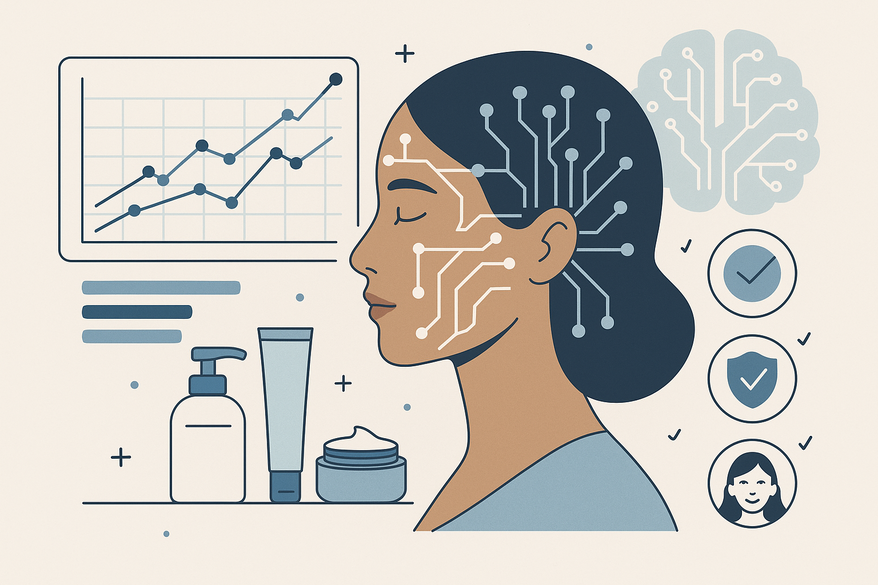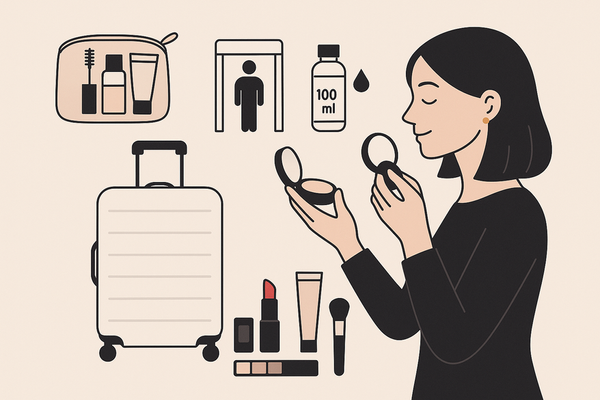AI-Driven Cosmetic Performance Metrics: Revolutionizing Beauty with Data and AI
Explore how AI-driven cosmetic performance metrics optimize product quality, safety, and customer experience, revolutionizing the beauty industry with data.

Estimated reading time: 9 minutes
Key Takeaways
- AI-powered insights deliver real-time, objective measures of skin health and product efficacy.
- Predictive analytics enable trend forecasting, hyper-personalized recommendations, and sustainable supply chains.
- Consumer sentiment mining via NLP uncovers emerging issues and optimizes marketing strategies.
- Real-time batch monitoring and quality control reduce waste and accelerate time-to-market.
- Challenges include data privacy, algorithmic bias, and the need for diverse training sets.
Table of Contents
- 1. Defining AI-Driven Cosmetic Performance Metrics
- 2. The Role of AI & Predictive Analytics in Cosmetic Metrics
- 3. Key AI-Driven Cosmetic Performance Metrics for Consumer Sentiment & Trend Detection
- 4. Practical Applications: Hyper-Personalized Products & Real-Time Batch Monitoring
- 5. Challenges & Opportunities: Data Privacy, Algorithmic Bias, and Sustainability
- Conclusion
- FAQ
1. Defining AI-Driven Cosmetic Performance Metrics
Cosmetic performance metrics are quantifiable indicators that measure product quality, safety, efficacy and consumer perception. By integrating AI, brands move from manual testing to an automated, data-driven approach.
- Product efficacy scores from clinical trials and real-world usage
- Customer retention and repurchase rates
- Sentiment scores from online reviews via NLP
- Ingredient stability and purity measures using sensor data
Key terms:
• AI-powered skin assessment – Convolutional neural networks analyze hydration, wrinkle depth and pigmentation.
• Personalized recommendations – AI algorithms suggest routines based on behavior, purchase history and skin profiles.
Experience Example: A beauty app compares baseline and follow-up skin images, showing a 40% boost in engagement.
2. The Role of AI & Predictive Analytics in Cosmetic Metrics
Next-gen measurement relies on:
- Deep learning for high-resolution image analysis
- Natural language processing for sentiment mining
- Predictive analytics for trend forecasting (ai-beauty-trend-analytics)
Applications & Benefits:
- Accuracy: AI models reach up to 95% agreement with expert dermatologists.
- Real-Time QC: Automated inspections cut production cycles by 60%.
- Innovation: Dynamic formula tweaks and custom regimens.
- Sustainability: Demand forecasting reduces ingredient waste.
Expert Insight: AI-driven analytics can reduce product development time by 30% and lower carbon footprints.
3. Key AI-Driven Cosmetic Performance Metrics for Consumer Sentiment & Trend Detection
- Skin Health & Efficacy
Measures hydration, wrinkles, texture; collected via image analysis; predicts long-term results. - Consumer Sentiment
Analyzes tone, emotion and brand mentions across social platforms to flag emerging concerns. - Product Quality Control
Monitors batch consistency and purity in real time to predict shelf-life and flag deviations. - Retail & Marketing Metrics
Tracks order values, lifetime value and retention to segment customers for targeted campaigns. - Trend Detection
Uses market data and social listening (global-makeup-trend-analysis-ai) to forecast next-season bestsellers.
Actionable Tip: Align product launches with forecasted trends to cut unsold inventory by 25%.
4. Practical Applications: Hyper-Personalized Products & Real-Time Batch Monitoring
Case Study A: AR overlays and AI assess 15+ skin parameters, driving a 35% increase in personalized sales.
Case Study B: Sensor-driven monitoring flags batch deviations, reducing defects by 40% and waste by 20%.
Case Study C: AI recommendation engines improve conversion rates by 25% and cut returns by 15%.
5. Challenges & Opportunities: Data Privacy, Algorithmic Bias, and Sustainability
Challenges:
- Data privacy and user consent for biometric data
- Need for large, balanced training datasets
- Mitigating algorithmic bias across skin tones
- Integrating AI into legacy systems
Opportunities:
- Advanced skin imaging for deeper insights
- Expanded personalization beyond products to wellness routines
- AI-driven sustainability through optimized sourcing
- Ethical AI frameworks to build consumer trust
Expert Note: Transparent bias mitigation and privacy practices boost adoption and loyalty.
Conclusion
AI-driven cosmetic performance metrics are revolutionizing product development, marketing and customer experience. By combining clinical data, image analysis, sentiment mining and predictive modeling, brands deliver better products and happier customers.
Future advances will enable ever more hyper-personalized, ethical and sustainable beauty solutions. Embrace these metrics now to secure a competitive edge in tomorrow’s data-driven beauty landscape.
FAQ
- What are AI-driven cosmetic performance metrics?
Quantifiable indicators powered by AI that assess product efficacy, safety and consumer perception in real time. - How does AI improve product quality control?
It analyzes sensor and imaging data during production to flag deviations and predict shelf life before packaging. - Can these metrics reduce waste?
Yes—demand forecasting and optimized sourcing can cut ingredient and resource waste by up to 25%.




